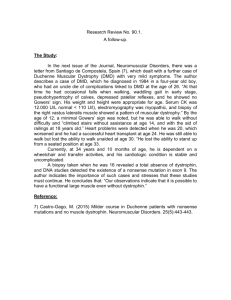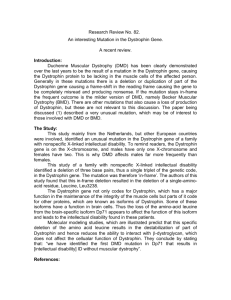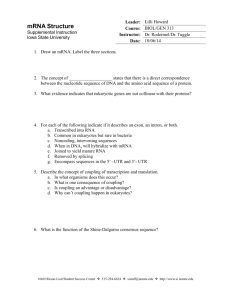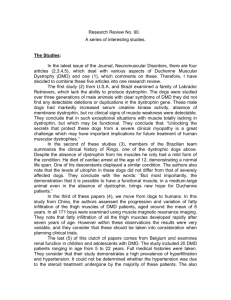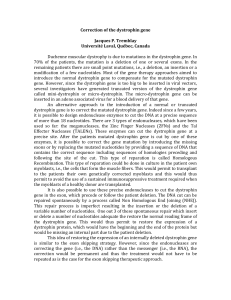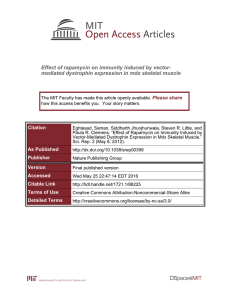Distribution and role of dystrophin protein family members in the
advertisement
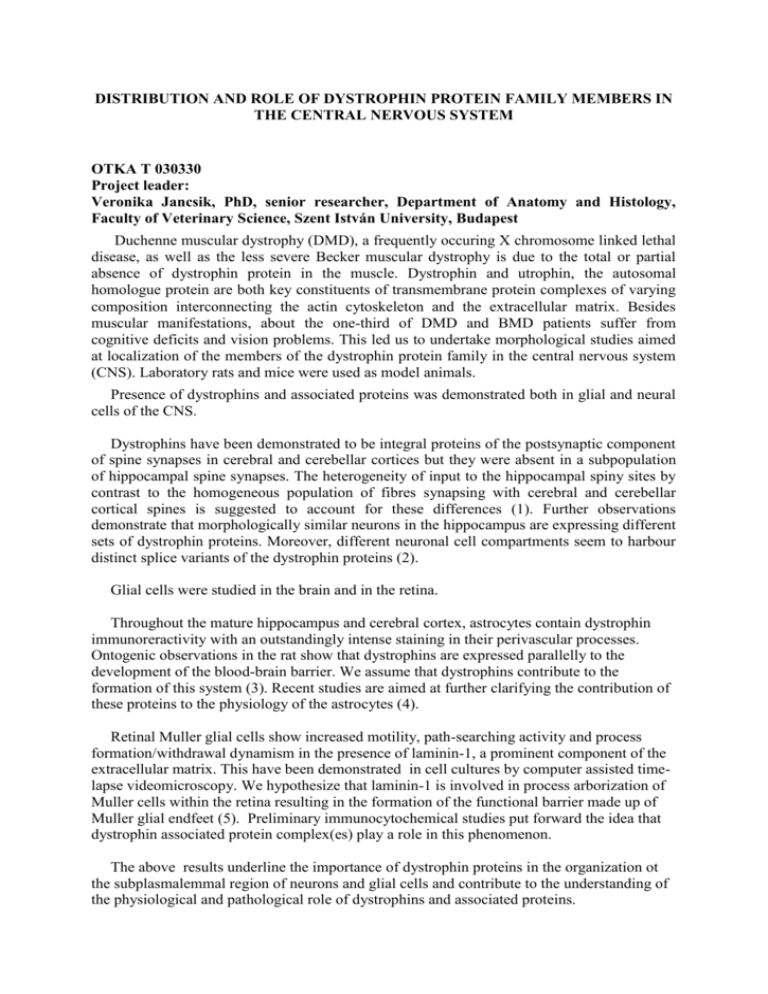
DISTRIBUTION AND ROLE OF DYSTROPHIN PROTEIN FAMILY MEMBERS IN THE CENTRAL NERVOUS SYSTEM OTKA T 030330 Project leader: Veronika Jancsik, PhD, senior researcher, Department of Anatomy and Histology, Faculty of Veterinary Science, Szent István University, Budapest Duchenne muscular dystrophy (DMD), a frequently occuring X chromosome linked lethal disease, as well as the less severe Becker muscular dystrophy is due to the total or partial absence of dystrophin protein in the muscle. Dystrophin and utrophin, the autosomal homologue protein are both key constituents of transmembrane protein complexes of varying composition interconnecting the actin cytoskeleton and the extracellular matrix. Besides muscular manifestations, about the one-third of DMD and BMD patients suffer from cognitive deficits and vision problems. This led us to undertake morphological studies aimed at localization of the members of the dystrophin protein family in the central nervous system (CNS). Laboratory rats and mice were used as model animals. Presence of dystrophins and associated proteins was demonstrated both in glial and neural cells of the CNS. Dystrophins have been demonstrated to be integral proteins of the postsynaptic component of spine synapses in cerebral and cerebellar cortices but they were absent in a subpopulation of hippocampal spine synapses. The heterogeneity of input to the hippocampal spiny sites by contrast to the homogeneous population of fibres synapsing with cerebral and cerebellar cortical spines is suggested to account for these differences (1). Further observations demonstrate that morphologically similar neurons in the hippocampus are expressing different sets of dystrophin proteins. Moreover, different neuronal cell compartments seem to harbour distinct splice variants of the dystrophin proteins (2). Glial cells were studied in the brain and in the retina. Throughout the mature hippocampus and cerebral cortex, astrocytes contain dystrophin immunoreractivity with an outstandingly intense staining in their perivascular processes. Ontogenic observations in the rat show that dystrophins are expressed parallelly to the development of the blood-brain barrier. We assume that dystrophins contribute to the formation of this system (3). Recent studies are aimed at further clarifying the contribution of these proteins to the physiology of the astrocytes (4). Retinal Muller glial cells show increased motility, path-searching activity and process formation/withdrawal dynamism in the presence of laminin-1, a prominent component of the extracellular matrix. This have been demonstrated in cell cultures by computer assisted timelapse videomicroscopy. We hypothesize that laminin-1 is involved in process arborization of Muller cells within the retina resulting in the formation of the functional barrier made up of Muller glial endfeet (5). Preliminary immunocytochemical studies put forward the idea that dystrophin associated protein complex(es) play a role in this phenomenon. The above results underline the importance of dystrophin proteins in the organization ot the subplasmalemmal region of neurons and glial cells and contribute to the understanding of the physiological and pathological role of dystrophins and associated proteins. References 1. Jancsik, V., Hajós, F. (1998) Differential distribution of dystrophin in postsynaptic densities of spine synapses. Neuroreport 9, 2249-2251 2. Jancsik, V., Halasy, K., Hazai, D., Hajós F.: Differential distribution of dystrophin splice variants in the brain. 16th European Cytoskeletal Forum Meeting, Maastricht, The Netherlands, 2001 3. Jancsik, V., Hajós, F. (1999) The demonstration of immunoreactive dystrophin and its developmental expression in perivascular astrocytes. Brain Research 831, 200-205 4. Kálmán, M., Szabó, A., Mornet, D., Jancsik V.: A splice variant of dystrophin characterises basal lamina-forming astrocytes? Society for Neuroscience, 32nd Annual Meeting, Orlando, USA, 2002 5. Méhes, E., Czirók, A., Hegedüs, B., Vicsek, T., Jancsik,V. (2002) Laminin-1 increases motility, path-searching and process dynamism of rat and mouse Muller glial cells in vitro; implication of relationship between cell behavior and formation of retinal morphology Cell Motil Cytoskeleton 53 203-13
